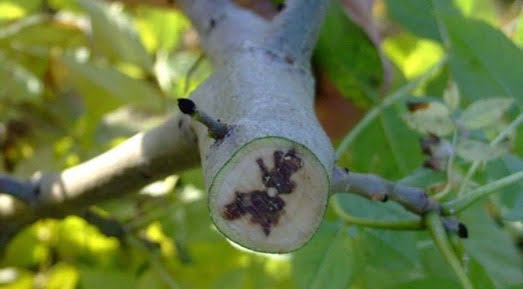If you have Ash Trees at your property…..this one is for you.
Ash Dieback is a fungal disease (Hymenoscyphus fraxineus) that is widespread across the UK. It was discovered in the UK in 2012 but is believed to have been around for many years before.
Unfortunately, this is a serious disease that causes our native Ash Trees to decline and eventually die. It is so widespread across the UK, it is thought that 80% of our Ash Tree population will succumb to this disease.
It is important to know what signs to look out for in your Ash trees. Below is a list of symptoms you may see if your trees are infected.
Symptoms of Ash Dieback
- Leaves develop dark patches in the summer
- They wilt and discolour to black. Leaves might shed early
- Dieback of the shoots and leaves is visible in the summer
- Lesions develop where branches meet the trunk (Often diamond-shaped and dark brown)
- Inner bark looks brownish-grey under the lesions.
- New growth from previously dormant buds further down the trunk. This is known as epicormic growth and is a common response to stress in trees.


It is important to consult a professional Tree Surgeon if you spot any of these signs as your Ash tree may be in decline and could cause damage or injury to you or your property.
Tree Surgeons can assess if the tree is infected, how much damage has been caused by the disease and what the best course of action to take will be.
How you can help prevent the spread of Hymenoscyphus Fraxineus?
- Clean your shoes before and after visiting a wooded area
- Avoid taking cuttings or plant material from the countryside
- Wash your car or bike wheels to remove mud or plant matter
Quick Facts
- Common names: Ash dieback, chalara
- Scientific name: Hymenoscyphus fraxineus
- What does it affect?: Ash
- Areas affected so far: the whole of the UK
- Origin: originally from Asia, arrived in the UK via mainland Europe
